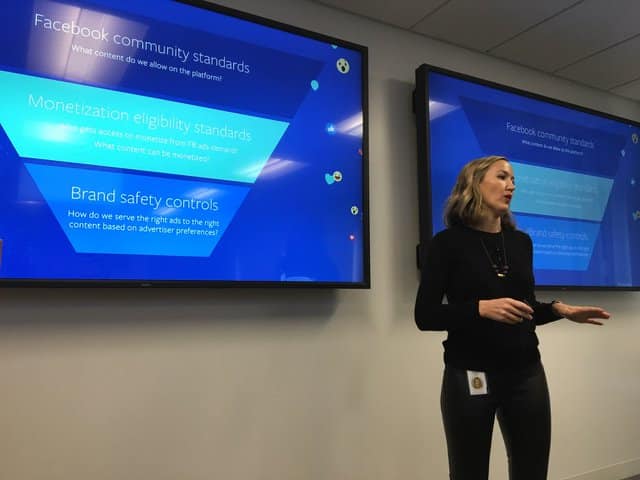
Last week Facebook Los Angeles held its Bigger Picture of the Smaller Screen event, attracting media and advertising agencies eager for marketing tips. Several Facebook experts spoke at the event, including Chad Kramer, a Facebook representative, Theresa Philippe, product marketing manager, and Carolyn Coyne, global creative strategist for Facebook’s Creative Hub. Optimizing for mobile is integral to succeeding in Facebook’s platform, and these three speakers couldn’t have emphasized that point more.
“There’s a story about Mark Zuckerberg,” said Kramer, who delivered the opening statements. “If you come into his office with an idea that isn’t optimizing for mobile, he will kindly tell you to leave.”
Despite the friendly chuckles, everyone in the room knew the importance of mobile optimization. According to a Facebook study, more people are consuming video through their phones. Forty-one percent of consumers watch video because it connects them to others, and 40 percent watch it because it gives them something to talk about.
If advertisers want to attract the mobile audience, they must understand the behaviors of that audience. According to the three speakers at Facebook LA, there are three types of mobile audience: the audience who are on the go, who lean forward, and who lean back.
The On-the-Go Audience
People standing in long Starbucks lines, sitting in subway trains, or walking to work are considered an on-the-go audience. Because they are traveling from A to B, quickly consuming media content, this audience, more than any other, is the hardest to stop mid scroll.
Attracting their attention, although challenging, is not impossible. Philippe suggests creating arresting and memorable visuals in the form of cinemagraphs, gifs, short 3-second vertical videos, and Instagram Stories with the reach objective. Because 47 percent of ad recall lift occurs in the first three seconds of a video, Philippe says to use a simple message with the main point appearing within the first three seconds.
The Lean Forward Audience
Because users in the lean forward audience are not moving from point A to point B, their attentions, in contrast, are easier to capture. With this type of audience, advertisers must drive consideration by creating ads that invite interaction. Ad formats such as carousel, canvas, collections, and 360 paired with the brand awareness objective are the best to use for this audience.
The Lean Back Audience
Users in the lean back audience are usually found sitting in their couches at home, watching TV. Of the three types of mobiles audiences, the lean back audience is the most receptive to longer videos such as live and in-stream video ads on Facebook and Audience Network. Because they have longer attention spans, they are more receptive to ads that are immersive and that have complex messages.
For this type of audience, Coyne encourages advertisers to create long, immersive video ads with the video views objective. Because users in the lean back audience have longer attention spans, live and 30-second videos work well with them.
As Kramer illustrated in his opening statement, Facebook is a mobile-first company. If advertisers don’t optimize their ads for mobile devices and the three types of mobile audiences, they are out of the game.
